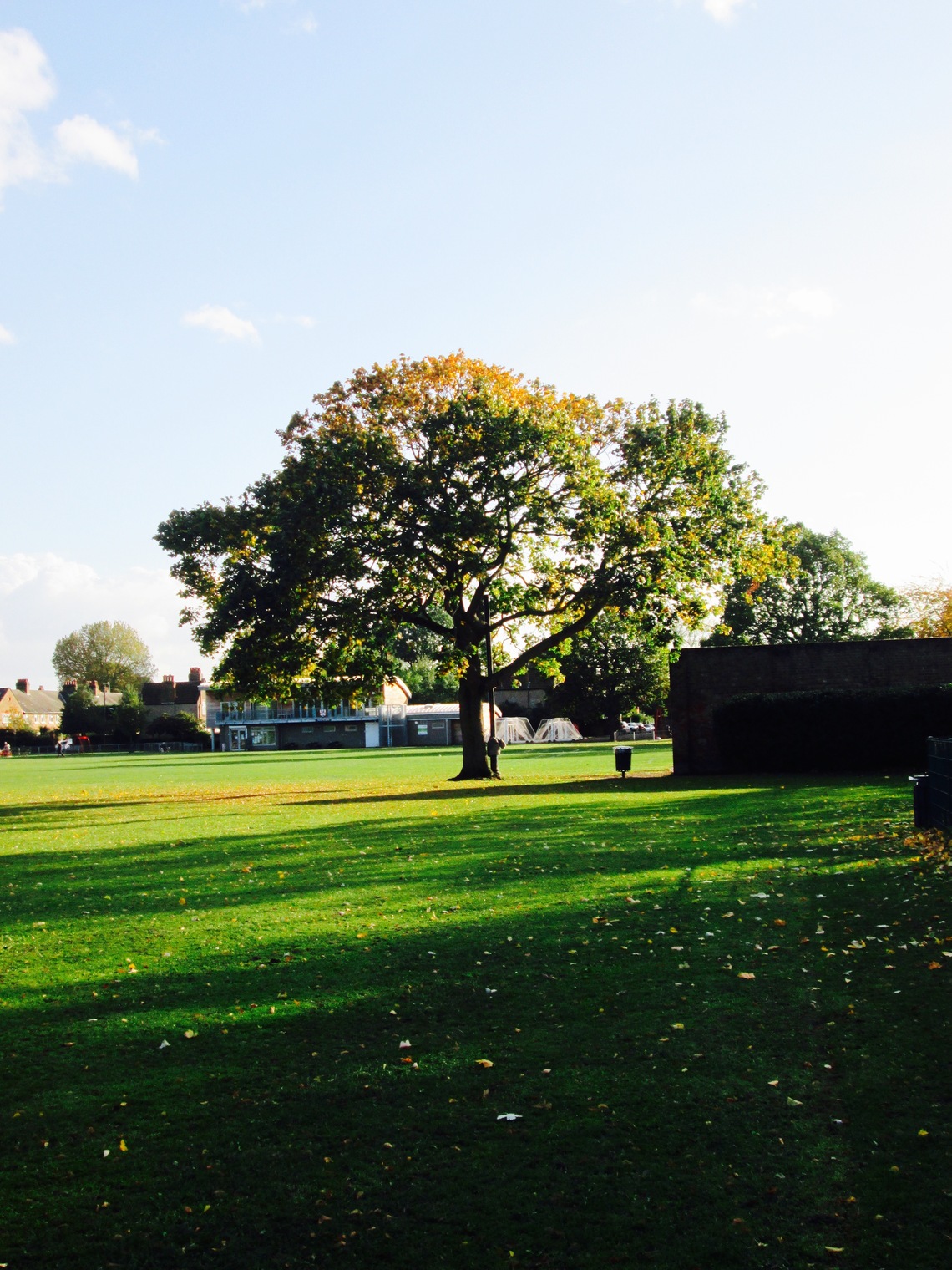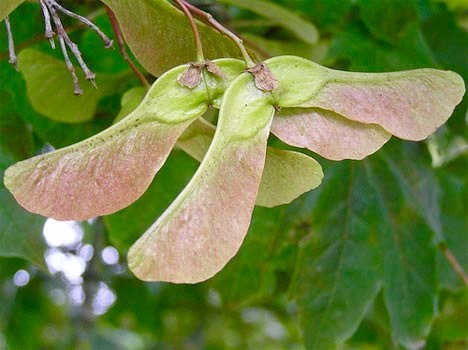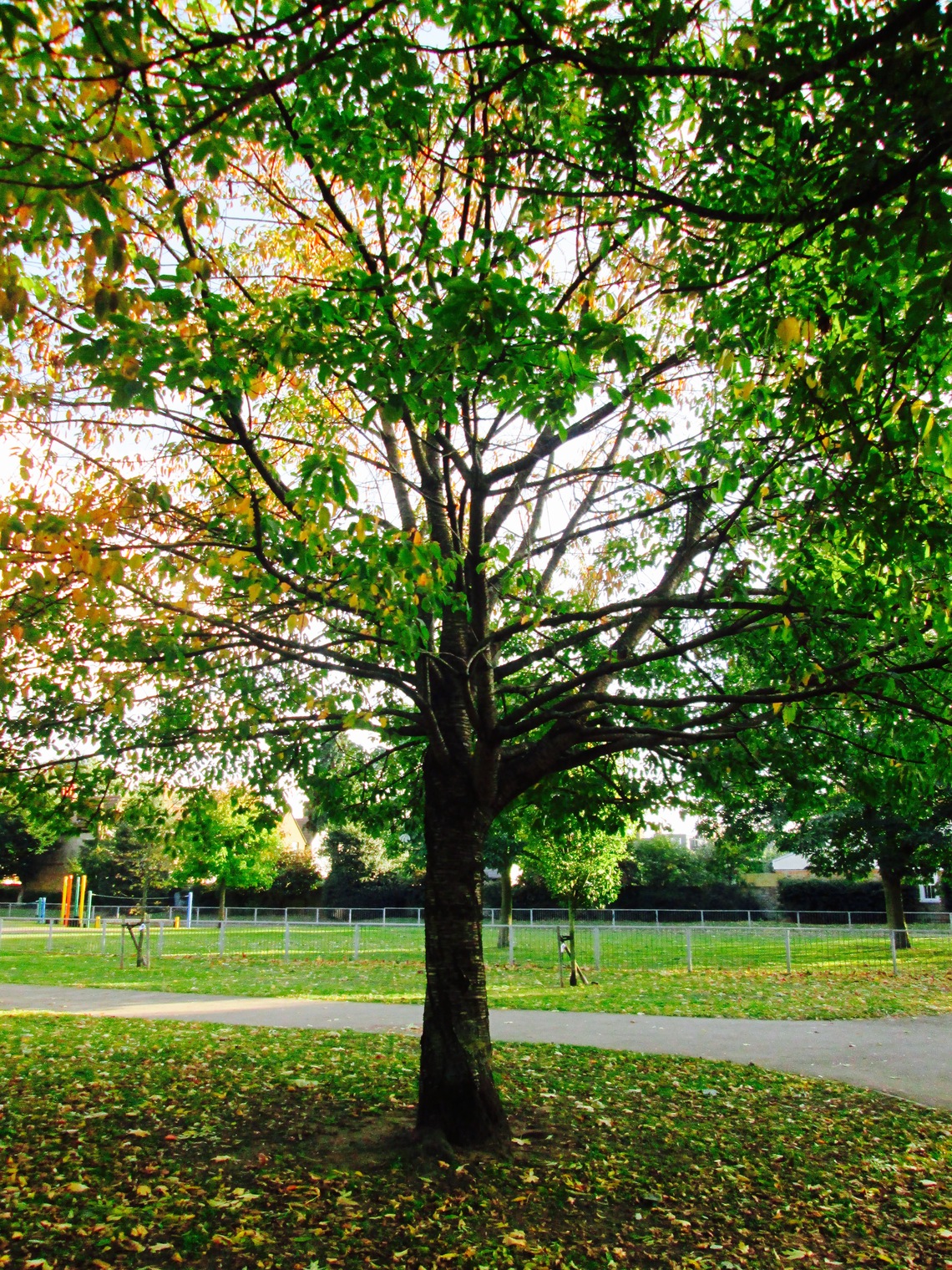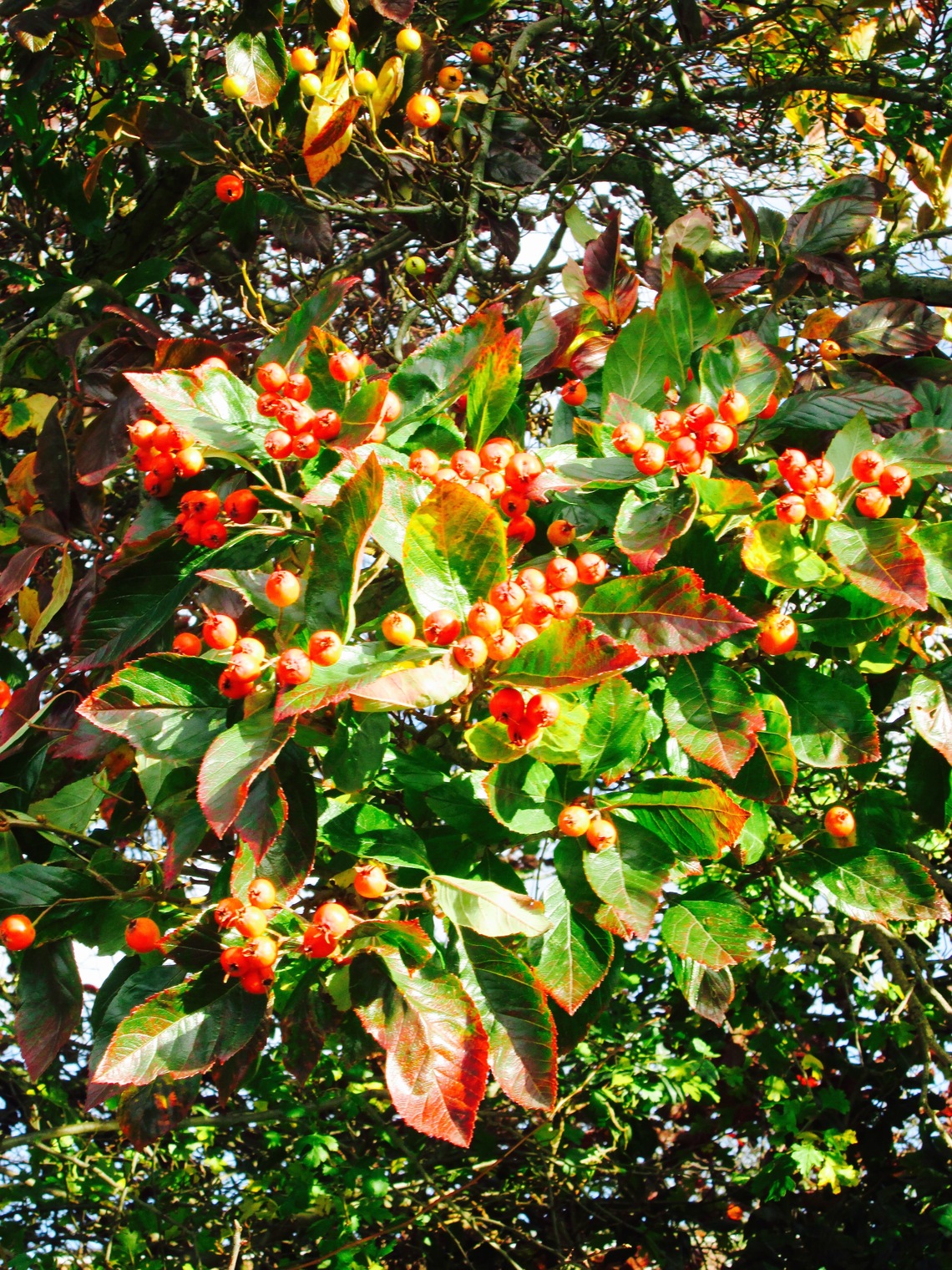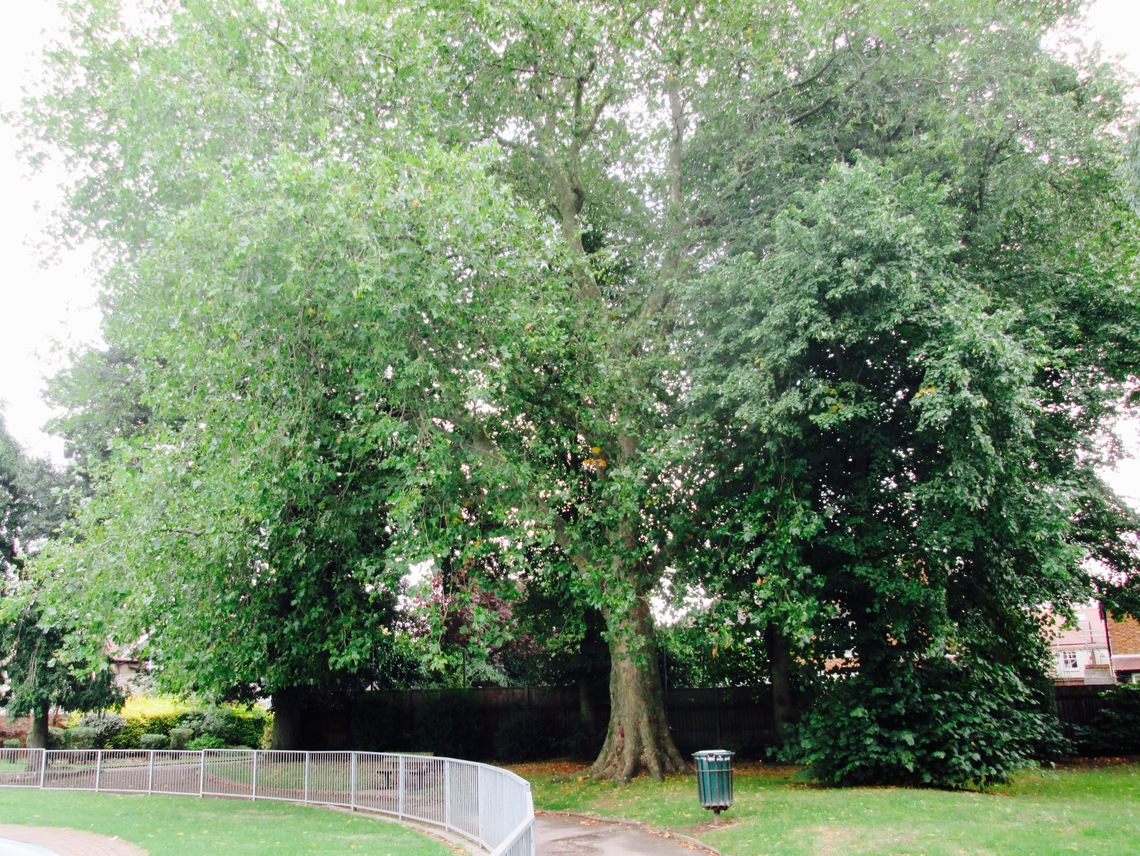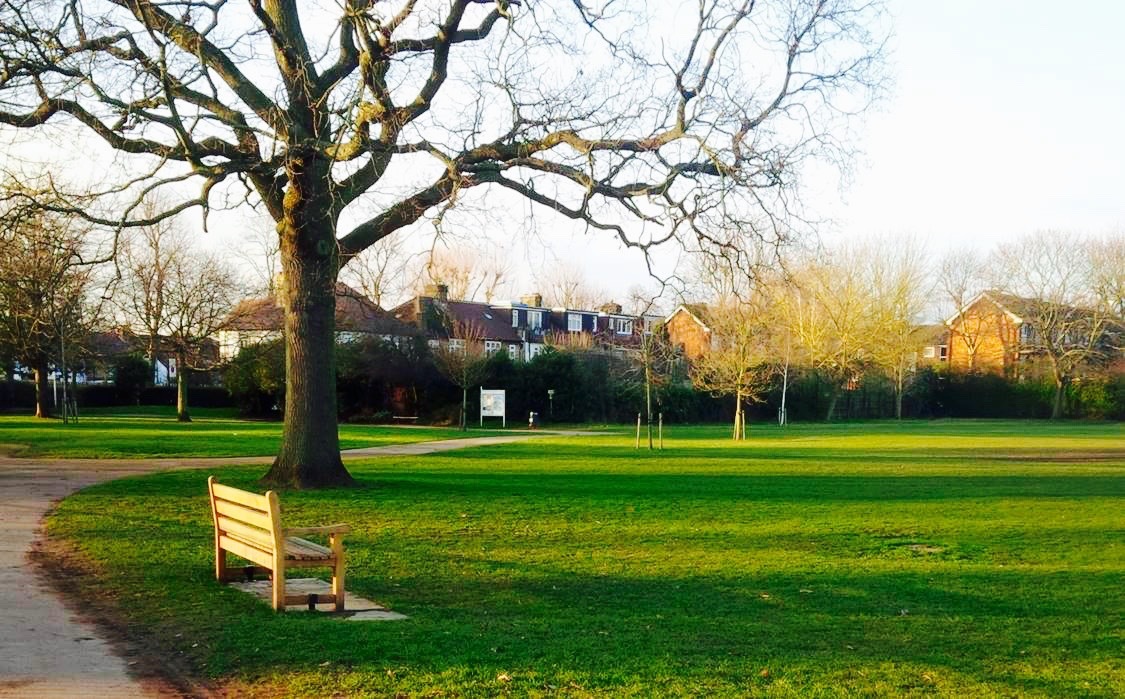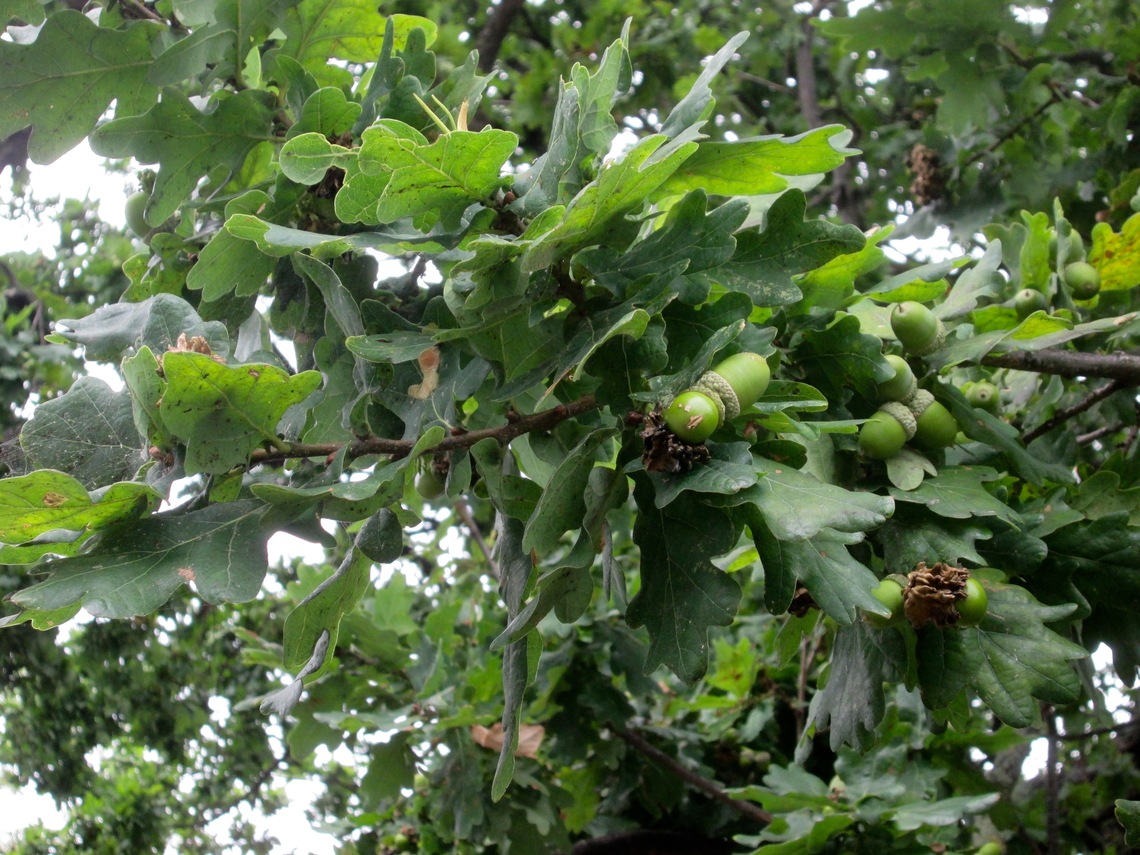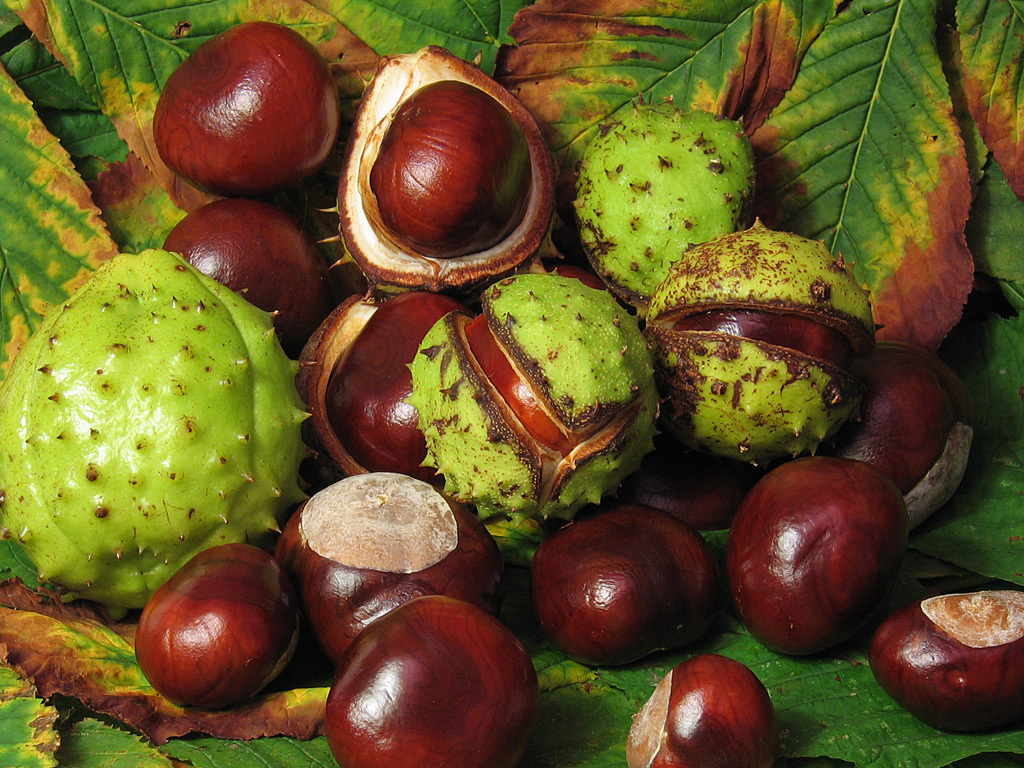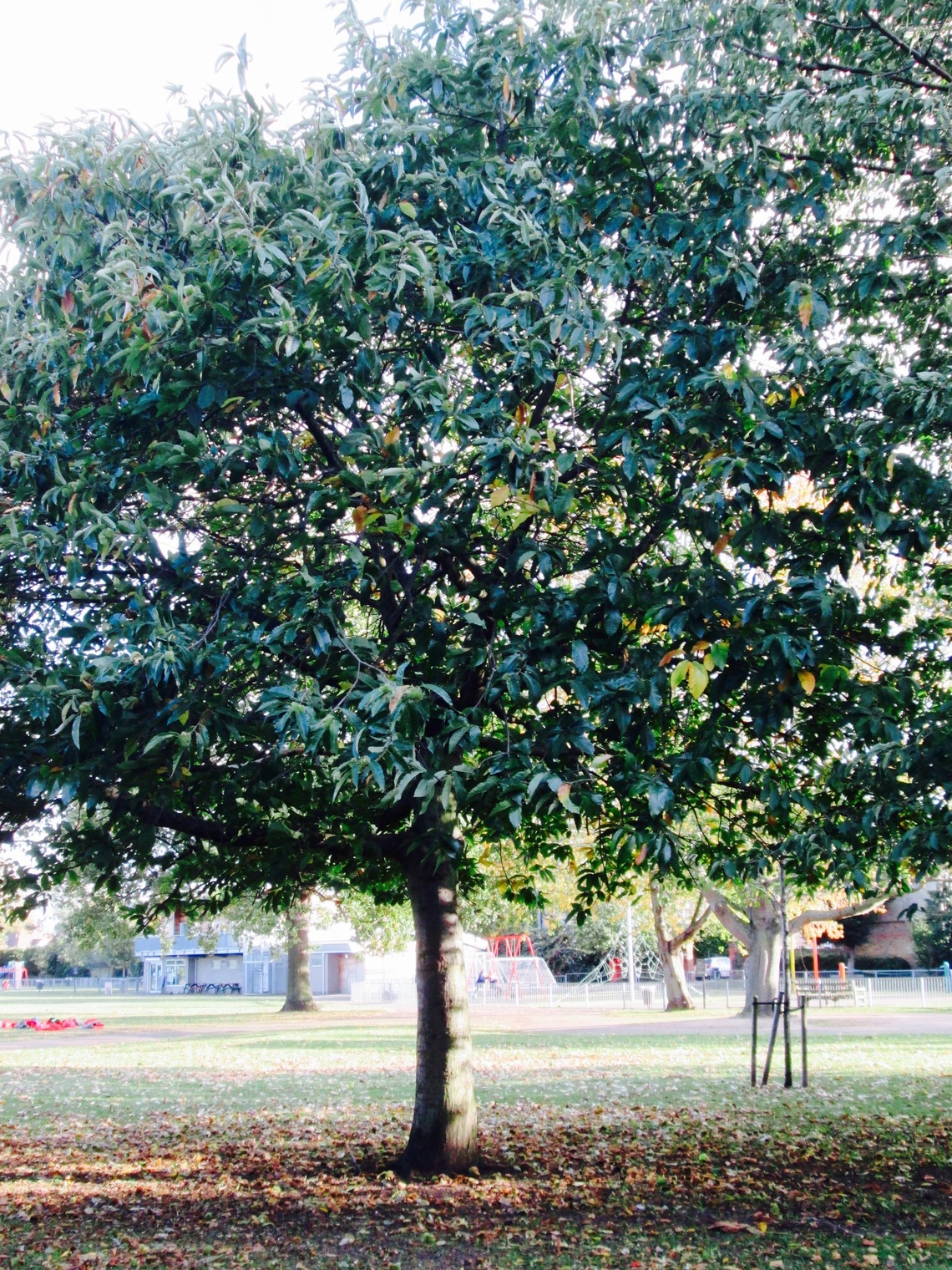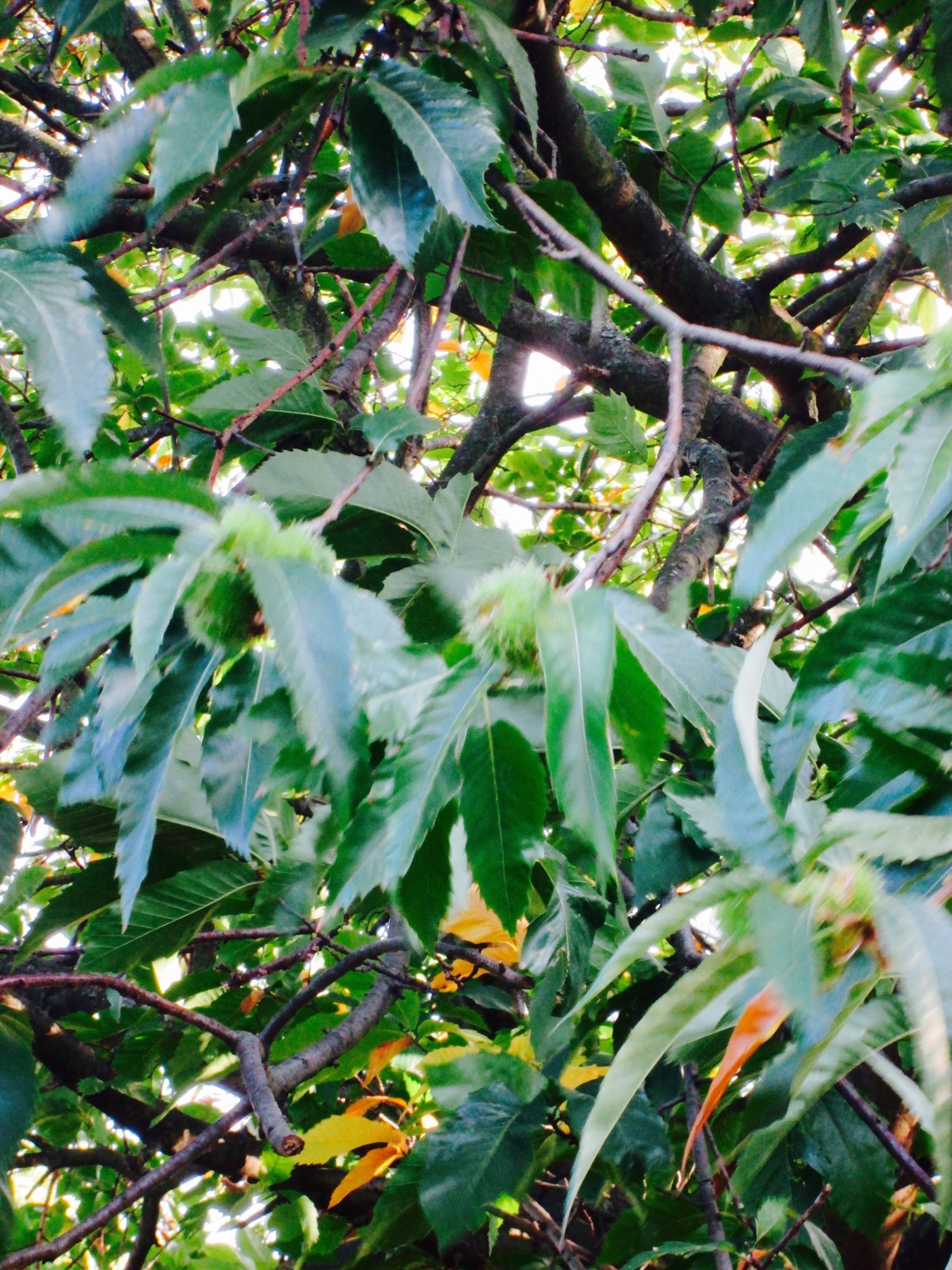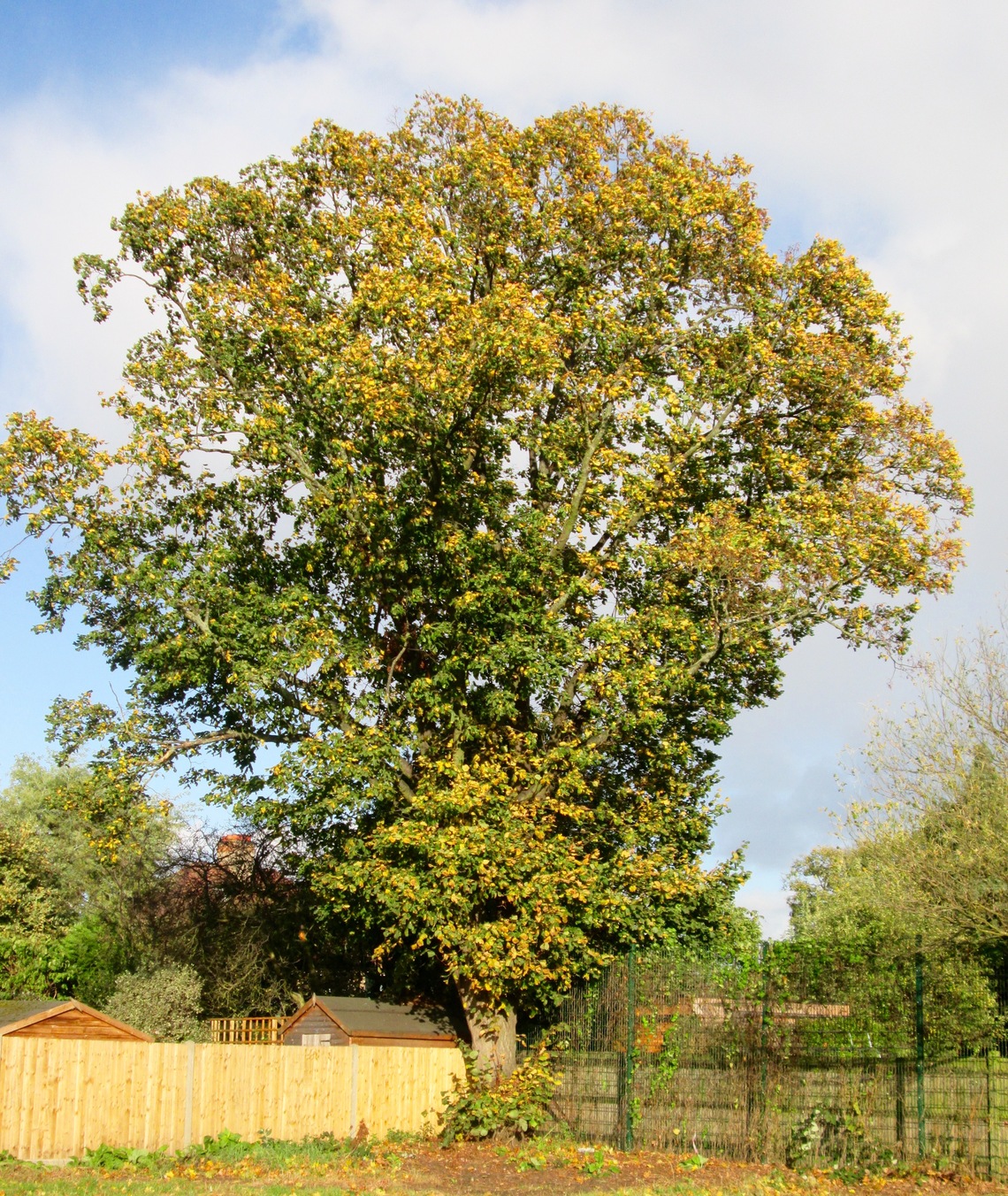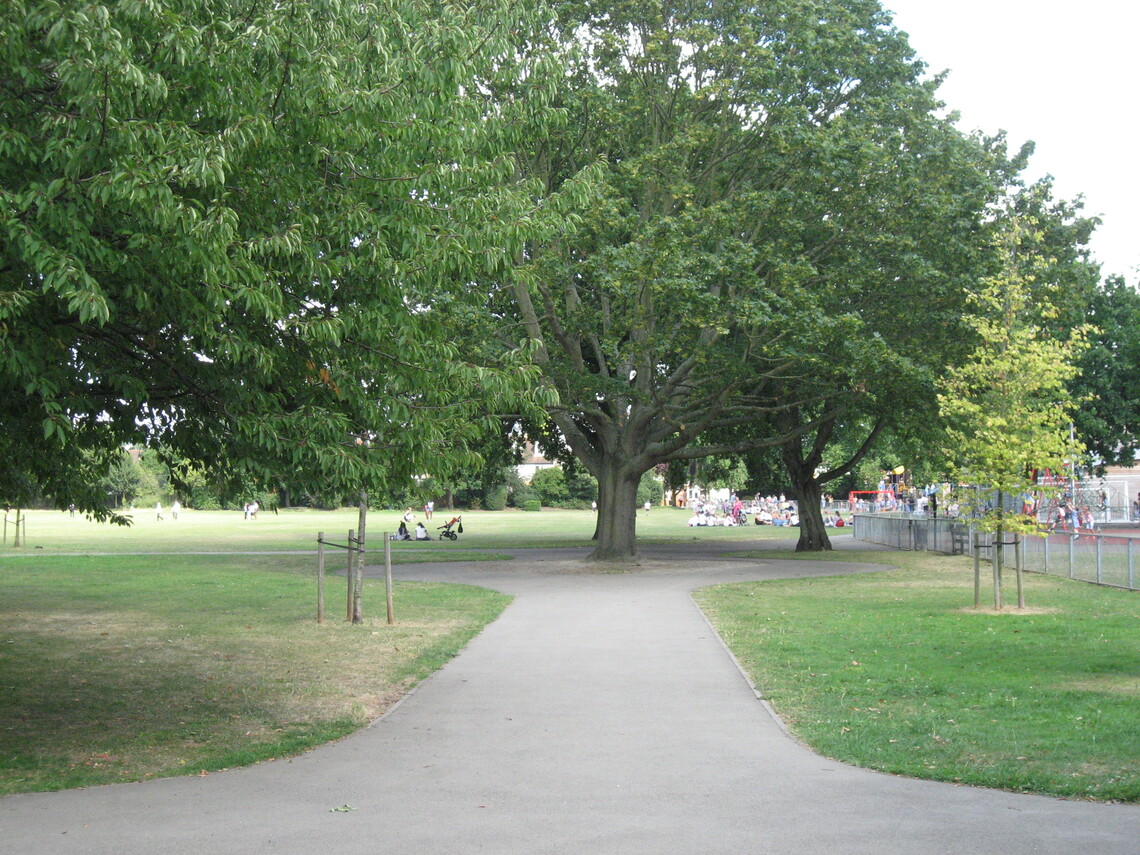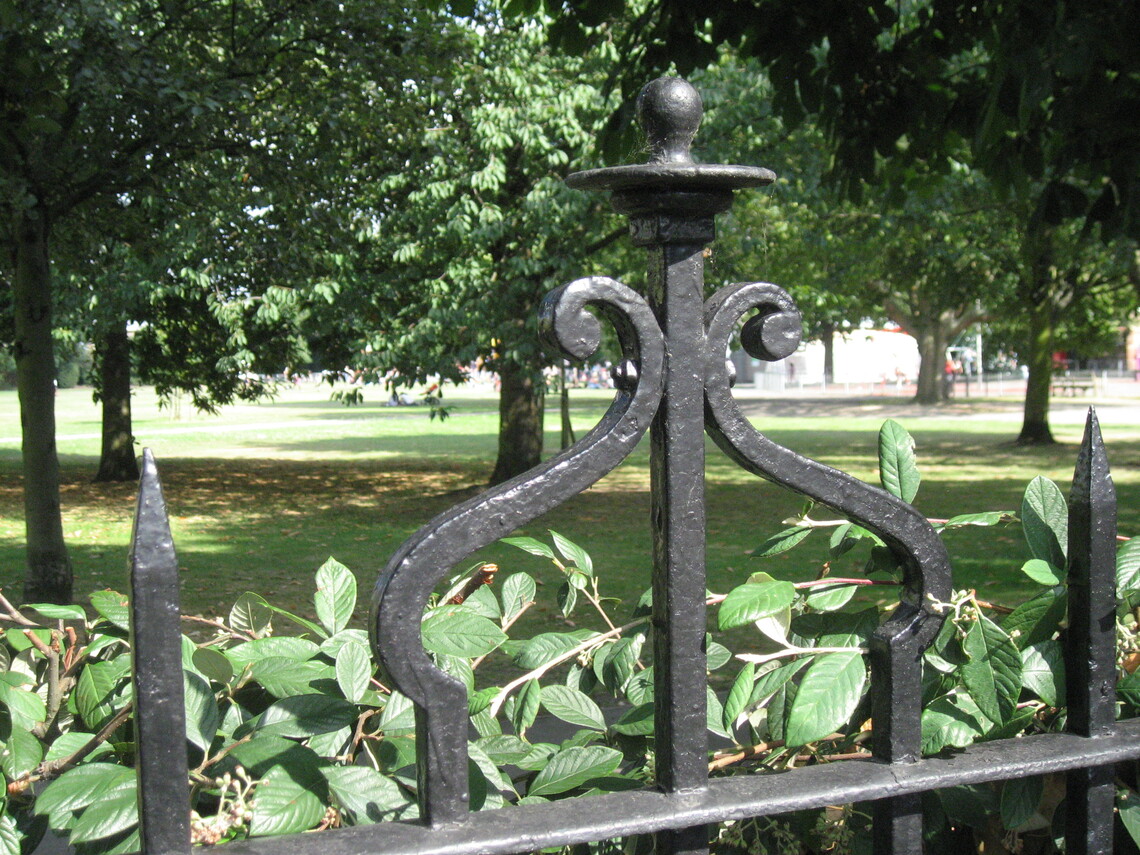North Sheen Recreation Ground has more than 100 trees, many planted a century ago when the Rec was first opened. There are over 20 varieties of tree in the Rec, including the oak featured on our logo. Trees are vital to our well-being. They provide vital habitat for wildlife, they absorb carbon dioxide and give out oxygen.
TREE SURVEY
Richmond Council's Tree Manager and the Friends Group carried out a survey of the Rec's trees in 2016 - here is a the Tree Survey July 2016 with map and listing of the trees present in the Rec at that time (since then some have died and some new trees have been planted).
The Rec Friends Group is currently working on a project to provide information and material for Guided Tree Walks in the Rec. If you'd like to be part of this initiative, please email us.
There are quite a few mature Sycamore trees, Acer pseudoplatanus, in the rec. One is in the middle of the path going from the North Road entrance towards the pavilion, another is on the left half way up the rec and another is by the benches at the end. The Sycamore is a deciduous broadleaf tree native tree to central, eastern and southern Europe. It was probably introduced to the UK in the Middle Ages and is now a naturalised species. After pollination by wind and insects, female flowers develop into distinctive winged fruits known as samaras. When ripe, these spin down to the ground like mini-helicopters.

Indian Horse Chestnut, Aesculus indica, is native to the lower slopes of the north-west Himalaya, from Afghanistan and Pakistan to western Nepal. In the Himalayas it is one of the dominant trees of deciduous forests, growing alongside oaks, maples, birches and laurels. It was introduced to Britain in 1851 by Colonel Henry Bunbury, a friend of Sir Joseph Hooker, Director of Kew Gardens from 1865-1885, who planted seeds in his family’s Suffolk garden. Its conkers, inedible and poisonous, come in a smooth and spineless case. They are wrinkled, darker and smaller than that of the standard Horse Chestnut.
Cotoneaster bush.
The London Plane tree, Platanus × acerifolia, is a hybrid of the Oriental Plane and the American Sycamore. In the rec, we have a mature plane tree by the infant playground, overlooking the paddling pool. The London plane is very tolerant of atmospheric pollution and root compaction, and for this reason it is a popular urban roadside tree. It gets rid of pollution by shedding parts of its bark each year. The London Plane has been given the Royal Horticultural Society's Award of Garden Merit. Its distinctive, brown spiky seed balls hang on its branches throughout the winter, like nature's forgotten Christmas baubles.
We are lucky to have two mature English Oak trees (Quercus robur) in the rec: one beside the recently restored bench on the edge of the grass looking out over the rec and the other nearby, outside the junior playground. A native hardwood tree, its strong timber was used extensively in Tudor times for ships and buildings. "Heart of Oak" is a traditional sailors song that became the official march of the Royal Navy: “Heart of Oak are our ships, Jolly Tars are our men, We always are ready: Steady, boys, Steady!” Oak trees can live more than 500 years and support up to 284 species of insects which in turn provide food for birds.
Horse Chestnut, Aesculus hippocastanum, came to the UK in the 17th century from the Balkans. Also known as a “Conker tree”, our example is by the railings along North Road. The long flower spikes that appear in spring are a rich source of nectar and pollen to insects, particularly bees. Children enjoy playing “conkers” with its seeds, which are inedible and poisonous.
Sweet Chestnut. The people who planted the original trees in the rec created a “chestnut area” near to North Road. As well as the Horse Chestnut and Indian Horse Chestnut, we have a Sweet Chestnut: Castanea sativa. This tree was probably introduced to Britain by the Romans and has naturalised in the UK. Sweet Chestnuts can live for 700 years. The nuts of the Sweet Chestnut come in prickly cases and unlike conkers, these nuts are edible. The Romans ground them to make flour.
Sycamore in north-east corner of rec.
Sweet Chestnut, Sycamore and Oak on approach from North Road entrance.
View from North Road through the art nouveau railings, installed in about 1905.


